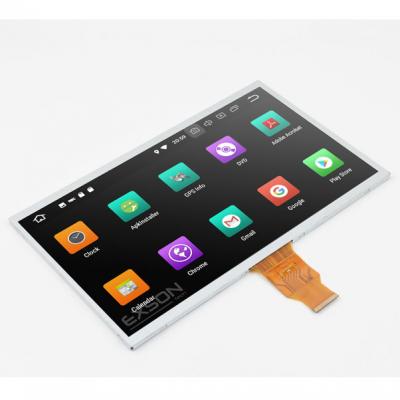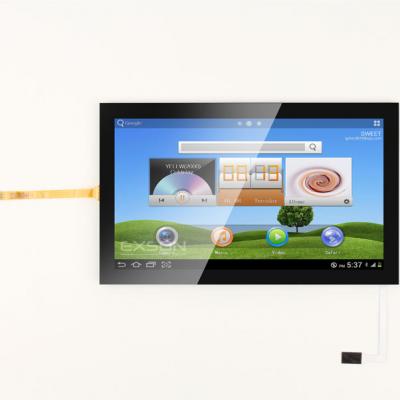When we use display devices such as mobile phones, car displays, and home appliances, do we sometimes feel that there are lines scrolling up and down on the screen? Sometimes the screen even flickers? Yes, this is the flickering phenomenon of LCD SPI displays. Below, we will explain the reasons, principles, and solutions of LCD SPI screen flickering in three aspects.
There are many reasons for the LCD SPI screen flickering, roughly including
The screen flickers due to the frequency of the LCD SPI screen and the ambient light source being similar. Because most of the time the frequency of the screen light source and the environment light source are different, but it is not excluded that it may cause screen flicker by coincidence.
The flashing screen phenomenon caused by poor matching of the LCD SPI screen module and the device motherboard.
The backlight of the LCD SPI screen causes screen flicker, which is the most common cause of screen flicker.
We know that the backlight of an LCD SPI screen is mainly divided into two types: one is LED backlight, which uses LED (light-emitting diodes) as the backlight source of the LCD display screen. The other is CCFL backlight, which uses CCFL (cold cathode fluorescent lamp) as the backlight source of the LCD SPI screen.
Compared with traditional CCFL backlight, LED backlight has the characteristics of low power consumption, low heat generation, high brightness, and long life. In terms of market share, LED SPI backlight is now mainstream, and the backlight used in various LCD display fields such as household appliances, car displays, and digital products is mostly LED backlight. However, LED backlight is not without disadvantages. The phenomenon of flickering is more likely to occur when using a display screen with LED SPI backlight. Especially for some customers who are more sensitive to the eyes, this kind of flicker is not friendly. Over time, it will cause eye soreness and other phenomena. So, is this entirely LED backlight's fault? In fact, the key reason for LCD SPI screen flicker is PWM dimming.
So what is PWM dimming? We know that the brightness of LED backlight is a fixed value. To adjust the brightness of the LCD screen, the LED backlight is continuously turned on and off. By adjusting the length of the on and off durations, the brightness of the display screen is adjusted. When users adjust the brightness, they are actually adjusting the length of the backlight turning on and off, and this adjustment method is called PWM dimming.
In the actual application of display products, the switch time from LED backlight on to off is very fast, and the working frequency of display products using PWM dimming is 200Hz-1000Hz. When the frequency reaches 100Hz, the human eye hardly perceives the brightness changes, and the picture we see is always bright.
In fact, CCFL backlight also uses PWM dimming, but CCFL is essentially a cold cathode fluorescent lamp tube, and the process of electrons hitting the phosphor to form a light spot in the fluorescent lamp tube has a delay effect, causing residual light effects. Therefore, the flashing screen situation of CCFL backlight is relatively better. Although LCD backlight has flickering problems, it is mainly evident in low brightness, so it will not change its mainstream position as a backlight.
One of the solutions to LCD SPI screen flickering caused by the backlight is to use high-frequency PWM dimming. As we mentioned earlier, the working frequency of common LCD display products is 200Hz-1000Hz. For some LCD display fields with particularly strict display requirements, the working frequency can be increased to 5000Hz or even higher, which can make the human eye unable to perceive the flicker of the screen and eliminate the problem of LCD screen flicker.
However, high-frequency PWM dimming needs to be moderate, and the optimal solution should be based on the product's own needs, comprehensive consideration of cost, display effect, and other factors.
 Difference Between LCD and TFT ScreenOctober 31, 2022LCD refers to a liquid crystal display, and TFT is a type of LCD. The former is dedicated to desktop computers and the latter is dedicated to notebooks. So, what are the differences between lcd and tf...view
Difference Between LCD and TFT ScreenOctober 31, 2022LCD refers to a liquid crystal display, and TFT is a type of LCD. The former is dedicated to desktop computers and the latter is dedicated to notebooks. So, what are the differences between lcd and tf...view How Touch Panel Modules Shape User ExperiencesJanuary 25, 2024In the fast-paced world of technology, user interfaces play a pivotal role in shaping our interactions with devices. Among the innovative solutions driving this evolution is the touch panel module, a ...view
How Touch Panel Modules Shape User ExperiencesJanuary 25, 2024In the fast-paced world of technology, user interfaces play a pivotal role in shaping our interactions with devices. Among the innovative solutions driving this evolution is the touch panel module, a ...view The Difference between OLED and TFT DisplaysDecember 9, 2022OLED is one of the hottest concepts in the current display industry, and OLED itself has many advantages. For another concept in the real industry - TFT, perhaps not so many people know about it. Toda...view
The Difference between OLED and TFT DisplaysDecember 9, 2022OLED is one of the hottest concepts in the current display industry, and OLED itself has many advantages. For another concept in the real industry - TFT, perhaps not so many people know about it. Toda...view Perspective Selection for Industrial LCD ScreensJune 30, 2023We will discuss the viewing angles of industrial LCD screens and how to choose the appropriate viewing angle for your project.Overview of viewing angles for industrial LCD screensScreen viewing angle ...view
Perspective Selection for Industrial LCD ScreensJune 30, 2023We will discuss the viewing angles of industrial LCD screens and how to choose the appropriate viewing angle for your project.Overview of viewing angles for industrial LCD screensScreen viewing angle ...view Analysis of the Causes of Chromatic Aberration in TFT LCDOctober 27, 2020Some customers will ask us why there is a chromatic aberration in the same TFT LCD screen? The so-called chromatic aberration of a TFT LCD screen means that when two LCDs of the same model are placed ...view
Analysis of the Causes of Chromatic Aberration in TFT LCDOctober 27, 2020Some customers will ask us why there is a chromatic aberration in the same TFT LCD screen? The so-called chromatic aberration of a TFT LCD screen means that when two LCDs of the same model are placed ...view Capacitive LCD Display: Touch InteractionAugust 13, 2024A capacitive LCD display is a display module that integrates capacitive LCD display technology with liquid crystal display technology. The capacitive LCD display uses a four-layer composite glass scre...view
Capacitive LCD Display: Touch InteractionAugust 13, 2024A capacitive LCD display is a display module that integrates capacitive LCD display technology with liquid crystal display technology. The capacitive LCD display uses a four-layer composite glass scre...view Call us on:
Call us on:  Email Us:
Email Us:  2F-M1 XiaWei Industrial Park, GuanLan, LongHua District, SZ, China
2F-M1 XiaWei Industrial Park, GuanLan, LongHua District, SZ, China